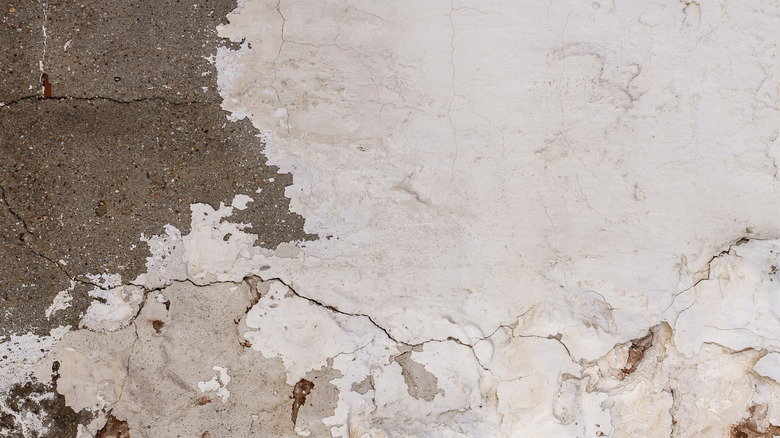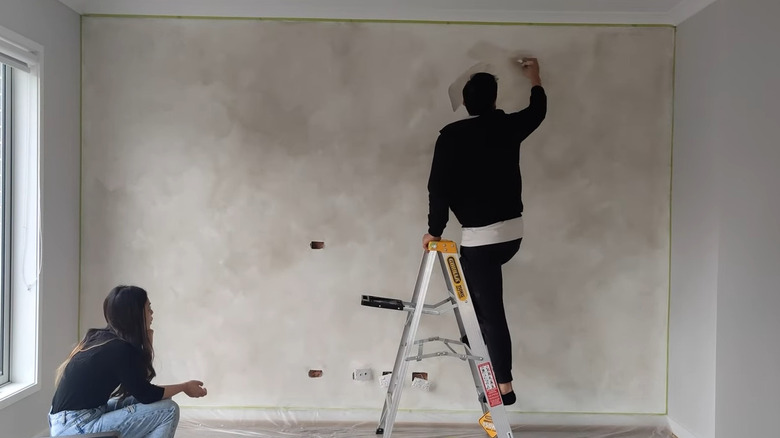The Unfortunate But True Disadvantages Of Using Limewash In Your Home
Limewash has been used as a coating and painting option for centuries due to its breathable, eco-friendly, and non-toxic nature. Made from crushed limestone, natural pigment, and water, the chalky, matte texture gives walls an effortless, lived-in appearance that both homeowners and designers find appealing. However, beyond its favored aesthetic, there are a whole host of challenges that many don't consider until it's too late. While limewash certainly has advantages, there are some mistakes to avoid when you DIY a limewashed wall.
Unlike modern paints that offer straightforward application and reliable durability, limewash comes with strict requirements regarding weather, temperature, and surface preparation. It is far from a one-size-fits-all solution and requires a level of craftsmanship that often exceeds the abilities of the average DIY enthusiast. Homeowners who attempt to use limewash often realize that its beauty comes at a steep cost, both in terms of effort and upkeep. If you're considering limewash for your home, it's essential to understand the full picture before committing to this high-maintenance finish.
The high maintenance and fragility of limewash
One of the most significant disadvantages of limewash is its lack of durability. Unlike standard paints that can last for years with minimal upkeep, limewash fades over time. When used outdoors, exposure to rain and wind and temperature fluctuations accelerate its deterioration, which results in an uneven, patchy appearance. Even indoors, any moisture, spills, or accidental scuffs can stain the surface. And if you're wondering if it is possible to clean a limewashed wall, the answer is likely no, making touch-ups an ongoing necessity. This means that limewash often requires more frequent reapplication, adding to the long-term maintenance and cost.
Additionally, trying to achieve a consistent finish with limewash can be challenging. The material reacts to environmental conditions during application, making it sensitive to humidity and temperature changes. This unpredictability can result in streaks, uneven coverage, and unexpected variations in color. Unlike standard paints that generally provide predictable results and are straightforward to apply, limewash will require a very specific application process and careful monitoring throughout. Any deviation in technique or changes in environmental conditions can lead to inconsistent and unsatisfactory results.
Limited options and the challenges of application
Beyond durability issues, limewash also presents limitations in terms of color and application. Unlike modern paints, which offer virtually endless color options, limewash is restricted to softer, earth-toned hues as it relies on natural pigments. Although some homeowners appreciate and prefer a muted palette, others may find it limiting — especially those hoping to incorporate vibrant or bold colors into their interior or exterior design. If your aesthetic vision requires deep, saturated tones, limewash may simply not be the right choice.
The complexity of application is another major drawback. Limewash must be applied to a specific type of porous surface, typically untreated plaster, brick, or stone. Limewash may struggle to adhere to cement, treated plaster, drywall, or previously painted surfaces, leading to flaking and an uneven appearance. The process also requires multiple coats, with adequate drying time between each, significantly extending the overall timeline compared to conventional painting. Many homeowners find themselves needing professional assistance to ensure proper application, further increasing the cost and effort involved.


